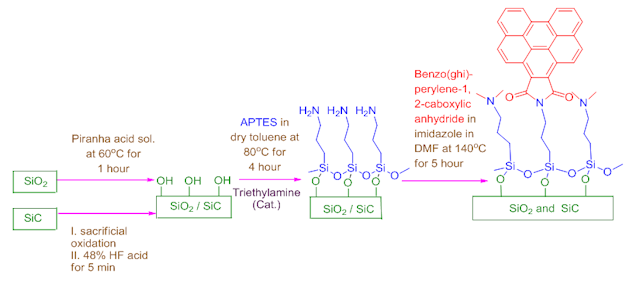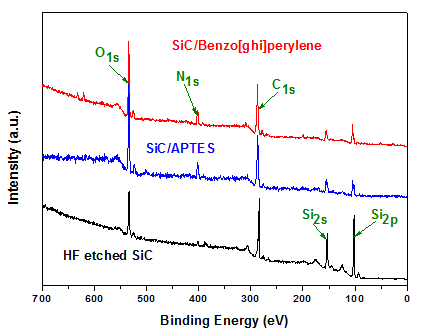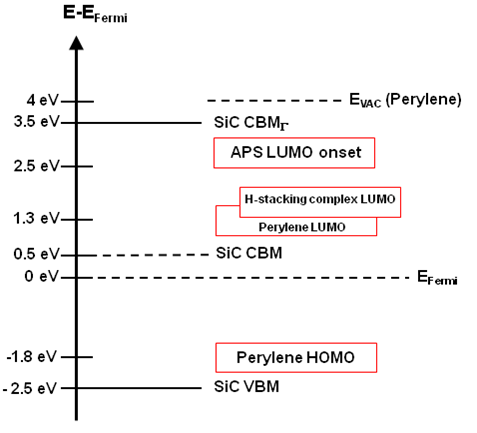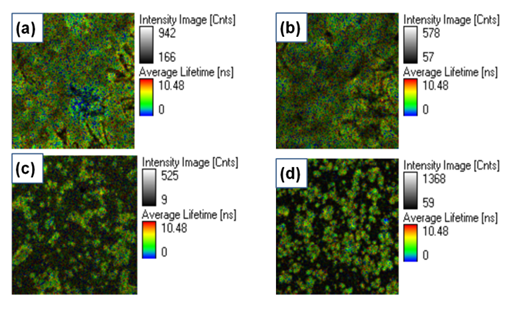Organic molecules on semiconductor surfaces
Deb Kumar Bhowmick, Fabian Kleimeier
Hybrid organic-inorganic interfacial systems attract attention due to their versatile applications in the field of bio-sensors, light emitting devices, microelectronics, transistors or biomedical applications. Differently doped semiconductors provide different band gaps which can control the electronic interactions between substrates and adsorbates. The covalent functionalization gives stability to the hybrid system.[1] Our targets are the preparation of organic-inorganic hybrid system on SiC and Si surfaces with optically active organic systems through different linker molecules and the investigation of their optoelectronic properties. Semiconductors can be functionalized by different methods, e.g., chemical vapor deposition, wet chemical processes or photochemical methods.

Perylene dye is wet chemically functionalized on quartz and SiC surfaces through aminopropyl triethoxysilane (APTES) linker.[2] X-ray photo emission spectroscopy (XPS) provides the elemental compositions of the surfaces whereas ultraviolet photoemission spectroscopy (UPS) and inverse photoemission spectroscopy (IPE) provide the occupied and unoccupied electronic states, respectively. ATR-IR spectroscopy gives the characteristic stretching and bending frequencies of the interfaces.

Figure 1: X-ray photoelectron spectra of HF-treated 6H-SiC(0001) (black), APTES functionalized SiC (APTES/SiC) (blue) and benzo[ghi]perylene-1,2-dicarboxylic

Figure 2: Overall energy level diagram of 6H-SiC-APTES-benzo[ghi]perylene obtained from the combined IPE and 2PPE data. IPE measurements were carried out by Nabi Aghdassi.

Figure 3: Average lifetime and intensity images of (a) Benzo/Qz excited at 375 nm using a long-pass filter at λ = 420 nm, (b) Benzo/Qz excited at 440 nm using a long-pass filter at λ = 470 nm, (c) Benzo/SiC excited at 375 nm using a long-pass filter at λ = 420 nm, (d) Benzo/SiC excited at 440 nm a using long-pass filter at λ = 470 nm.
The confocal microscopy measurements give two different steady state fluorescence lifetimes of the surface bound dye around 1.4 ns and 4.5 ns.
[1] M. Auernhammer, S. J. Schoell, M. Sachsenhauser, K. C. Liao, J. Schwartz, I. D. Sharp and A. Cattani-Scholz, Applied Physics Letters 100, 101601 (2012)
[2] D. K. Bhowmick, S. Linden, A. Devaux, L. De Cola, H. Zacharias, Small 8, 592 (2012)


